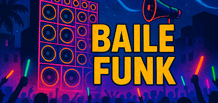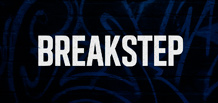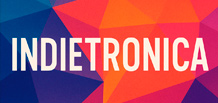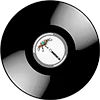Showbiz News | Page: 3
Futurepop: History, sound, Covenant, VNV Nation. Emotional club sound.
 Futurepop — a subgenre of electronic music that emerged in the late 1990s and early 2000s at the crossroads of synthpop, EBM, and trance. It blends danceable rhythms, emotive vocals, synth-driven melodies, and a dark club aesthetic. The sound aims for atmosphere, euphoric choruses, and a futuristic sheen while retaining its roots in “dark electronics.”
History
Late 1990s
After the heyday of darkwave and EBM, dark-club audiences began seeking a more melodic, EDM-oriented sound. Producers experimented with trance leads, big synth pads, and emotionally charged hooks.
2000s — defining the canon
Futurepop crystallized as its own direction. Cornerstones of the genre include the band VNV Nation and the projects Apoptygma Berzerk and Covenant. Their sound fuses 4/4 dance be...
Futurepop — a subgenre of electronic music that emerged in the late 1990s and early 2000s at the crossroads of synthpop, EBM, and trance. It blends danceable rhythms, emotive vocals, synth-driven melodies, and a dark club aesthetic. The sound aims for atmosphere, euphoric choruses, and a futuristic sheen while retaining its roots in “dark electronics.”
History
Late 1990s
After the heyday of darkwave and EBM, dark-club audiences began seeking a more melodic, EDM-oriented sound. Producers experimented with trance leads, big synth pads, and emotionally charged hooks.
2000s — defining the canon
Futurepop crystallized as its own direction. Cornerstones of the genre include the band VNV Nation and the projects Apoptygma Berzerk and Covenant. Their sound fuses 4/4 dance be...
Baile Funk: History, DJ Marlboro, Sound DNA, Funk Ostentação, and Global Expansion
 Baile Funk (often called funk carioca) is a Brazilian street movement and music style that grew out of parties in Rio de Janeiro’s favelas in the late 1980s–early 1990s. At the crossroads of Miami bass, electro, samba, and Afro-Brazilian rhythms, a fierce, noisy, hypnotic sound emerged — heavy sub-bass, chant-like hooks, and direct, spoken-style vocals. Over time, baile funk became a national phenomenon and later a global catalyst for pop music, EDM, and “global bass.”
Brief history
Origins (late ’80s): Rio radio stations spin Miami bass and electro; DJs start throwing bailes — courtyard block parties with massive speaker stacks (sound systems), where US beat templates are mixed with local MC delivery and Portuguese slang. Scene pioneers DJ Marlb...
Baile Funk (often called funk carioca) is a Brazilian street movement and music style that grew out of parties in Rio de Janeiro’s favelas in the late 1980s–early 1990s. At the crossroads of Miami bass, electro, samba, and Afro-Brazilian rhythms, a fierce, noisy, hypnotic sound emerged — heavy sub-bass, chant-like hooks, and direct, spoken-style vocals. Over time, baile funk became a national phenomenon and later a global catalyst for pop music, EDM, and “global bass.”
Brief history
Origins (late ’80s): Rio radio stations spin Miami bass and electro; DJs start throwing bailes — courtyard block parties with massive speaker stacks (sound systems), where US beat templates are mixed with local MC delivery and Portuguese slang. Scene pioneers DJ Marlb...
British Rap — the voice of the streets, accent, and sociocultural realism.
 British Rap — a branch of the hip-hop culture that took shape in the UK from the late 1970s to early 1980s. Unlike its American roots, British rap evolved under the influence of:
local street slang,
sound system culture,
Caribbean diasporas,
the UK electronic dance scene.
It is marked by a unique rhythmic feel, distinctive pronunciation and accent, and a stronger social focus in its lyrics.
Origins (1970–1980s)
The earliest examples of British rap emerged against the backdrop of:
disco and early electro,
reggae sound systems,
dub and dancehall.
Recordings appeared that were inspired by American MCs yet rooted in local themes and British linguistics. Importantly, the country already had a strong toasting tradition (the MC style born on dub parties).
By the late...
British Rap — a branch of the hip-hop culture that took shape in the UK from the late 1970s to early 1980s. Unlike its American roots, British rap evolved under the influence of:
local street slang,
sound system culture,
Caribbean diasporas,
the UK electronic dance scene.
It is marked by a unique rhythmic feel, distinctive pronunciation and accent, and a stronger social focus in its lyrics.
Origins (1970–1980s)
The earliest examples of British rap emerged against the backdrop of:
disco and early electro,
reggae sound systems,
dub and dancehall.
Recordings appeared that were inspired by American MCs yet rooted in local themes and British linguistics. Importantly, the country already had a strong toasting tradition (the MC style born on dub parties).
By the late...
Happy Hardcore — the ultra-energetic sound of ’90s rave culture.
 Happy Hardcore — a fast, emotive, and feel-good subgenre of electronic dance music that emerged in the UK in the early to mid-1990s. It’s defined by high BPM (160–180), rich melodicism, “happy” synths, chipmunk vocals (sped-up, pitch-raised vocal samples), and that unmistakable rave euphoria.
This style became a symbol of early rave culture, its neon visuals, smiley icons, and dancefloor freedom. Unlike aggressive hardcore, Happy Hardcore aims for joy, positivity, and melody while keeping the breakneck pace.
Historical context
1991–1993 The roots of Happy Hardcore take shape in UK raver communities, drawing on:
breakbeat hardcore,
early rave,
piano house,
jungle techno.
1994–1996 — the “golden era” The style conquers:
...
Happy Hardcore — a fast, emotive, and feel-good subgenre of electronic dance music that emerged in the UK in the early to mid-1990s. It’s defined by high BPM (160–180), rich melodicism, “happy” synths, chipmunk vocals (sped-up, pitch-raised vocal samples), and that unmistakable rave euphoria.
This style became a symbol of early rave culture, its neon visuals, smiley icons, and dancefloor freedom. Unlike aggressive hardcore, Happy Hardcore aims for joy, positivity, and melody while keeping the breakneck pace.
Historical context
1991–1993 The roots of Happy Hardcore take shape in UK raver communities, drawing on:
breakbeat hardcore,
early rave,
piano house,
jungle techno.
1994–1996 — the “golden era” The style conquers:
...
What Is Lowercase? The Philosophy, Technique, and History of Ultra-Quiet Electronic Music
 Lowercase is an experimental current of sound art and electronic music built on ultra-minimal, barely audible sounds. It is a radical exploration of silence, the acoustic details of objects, noises, and textures that usually go unnoticed in everyday life. Lowercase is not merely quiet — it is focused on microscopic audio and on shifting the listener’s attention to sub-perceptual sonic events.
History and origins
The term lowercase took hold in the early 2000s thanks to composer Steve Roden, who proposed a musical concept built on:
incidental everyday sounds,
objects,
surfaces,
micro-noise.
His album forms of paper (2001) is considered a canonical example of the genre. Roden processed the rustling of paper, amplified micro-details, and stretched them in time, turning an ordina...
Lowercase is an experimental current of sound art and electronic music built on ultra-minimal, barely audible sounds. It is a radical exploration of silence, the acoustic details of objects, noises, and textures that usually go unnoticed in everyday life. Lowercase is not merely quiet — it is focused on microscopic audio and on shifting the listener’s attention to sub-perceptual sonic events.
History and origins
The term lowercase took hold in the early 2000s thanks to composer Steve Roden, who proposed a musical concept built on:
incidental everyday sounds,
objects,
surfaces,
micro-noise.
His album forms of paper (2001) is considered a canonical example of the genre. Roden processed the rustling of paper, amplified micro-details, and stretched them in time, turning an ordina...
Dubwise — The Dub Aesthetic: Bass, Echo & Version. Production Guide for DnB and Techno.
 Dubwise is a music approach that grew out of Jamaican dub of the late 1960s–1970s and later stuck as a label for tracks/DJ set delivery that emphasize bass, echo, space, and the “version”. Today the word appears in reggae/dub, jungle and drum & bass, dub techno, downtempo and bass music: “dubwise” means the material is made the dub way—with deep low end, a “breathing” rhythm section, and effects treated as part of the arrangement.
Short definition
Dubwise is a dub-minded sound: a minimalist rhythm section, a dominant bass, live mixer-performance thinking (group mutes/solos), generous delay/echo/spring reverb, versioning (version, dub mix), and studio techniques used as instruments.
Origins and evolution
Jamaica, 1970s. Sound systems, ...
Dubwise is a music approach that grew out of Jamaican dub of the late 1960s–1970s and later stuck as a label for tracks/DJ set delivery that emphasize bass, echo, space, and the “version”. Today the word appears in reggae/dub, jungle and drum & bass, dub techno, downtempo and bass music: “dubwise” means the material is made the dub way—with deep low end, a “breathing” rhythm section, and effects treated as part of the arrangement.
Short definition
Dubwise is a dub-minded sound: a minimalist rhythm section, a dominant bass, live mixer-performance thinking (group mutes/solos), generous delay/echo/spring reverb, versioning (version, dub mix), and studio techniques used as instruments.
Origins and evolution
Jamaica, 1970s. Sound systems, ...
Lo-Fi: The Aesthetics of Imperfection, Hip-Hop and House. Recipe for Lo-Fi Beats (BPM)
 Lo-Fi (low fidelity) is the aesthetics of “imperfect” sound: deliberately left tape hiss, vinyl “dust,” needle crackle, overdriven mics, home demos, and simple harmonies. Today, lo-fi is not just a recording quality but a culture of its own: from lo-fi hip-hop / chillhop and “study beats” to lo-fi house, bedroom indie rock, dreampop, and ambient.
What is lo-fi: essence & sound
Artifacts as color. Noise, clicks/pops, wow & flutter (micro speed variations), narrow bandwidth, gentle clipping.
Minimalism and loops. Short loops, simple jazz chords, repeating motifs.
Warm dynamics. Fewer piercing highs, soft lows, “compressed” loudness — a comfortable backdrop.
Homemade feel. Instruments “within reach”: guitar, bas...
Lo-Fi (low fidelity) is the aesthetics of “imperfect” sound: deliberately left tape hiss, vinyl “dust,” needle crackle, overdriven mics, home demos, and simple harmonies. Today, lo-fi is not just a recording quality but a culture of its own: from lo-fi hip-hop / chillhop and “study beats” to lo-fi house, bedroom indie rock, dreampop, and ambient.
What is lo-fi: essence & sound
Artifacts as color. Noise, clicks/pops, wow & flutter (micro speed variations), narrow bandwidth, gentle clipping.
Minimalism and loops. Short loops, simple jazz chords, repeating motifs.
Warm dynamics. Fewer piercing highs, soft lows, “compressed” loudness — a comfortable backdrop.
Homemade feel. Instruments “within reach”: guitar, bas...
Slow Motion House — “chug”, Balearic meditation, and a warm groove at 90–108 BPM
 Slow Motion House (also known as slo-mo house, chug, sometimes “drug-chug”) is a slow, hypnotic branch of house and disco at reduced tempos. It favors a syrupy groove and a cinematic mood over peak-time dancefloor energy: dense percussion patterns, organic basslines, an analogue feel, psychedelic synths, ethnic/rock textures, and long transitions.
Key sound traits
Tempo: typically 90–108 BPM (sometimes 110–112).
Groove: rolling mid-tempo with emphasis on hats and percussion; the kick is softer than in techno/house.
Bass: warm and thick, often with a live flavor (Moog/SH-style), short repeating riffs.
Synths & FX: arpeggios, flanger/phaser, tape wobble/tremolo, cosmic leads, guitars with pedals, Indian/Middle Eastern timbres.
Atmosphere: Balearic, psych...
Slow Motion House (also known as slo-mo house, chug, sometimes “drug-chug”) is a slow, hypnotic branch of house and disco at reduced tempos. It favors a syrupy groove and a cinematic mood over peak-time dancefloor energy: dense percussion patterns, organic basslines, an analogue feel, psychedelic synths, ethnic/rock textures, and long transitions.
Key sound traits
Tempo: typically 90–108 BPM (sometimes 110–112).
Groove: rolling mid-tempo with emphasis on hats and percussion; the kick is softer than in techno/house.
Bass: warm and thick, often with a live flavor (Moog/SH-style), short repeating riffs.
Synths & FX: arpeggios, flanger/phaser, tape wobble/tremolo, cosmic leads, guitars with pedals, Indian/Middle Eastern timbres.
Atmosphere: Balearic, psych...
Big Beat — broken beats, funk, and the raw energy of the ’90s.
 Big Beat is a powerful, dance-floor branch of electronic music from the mid-to-late 1990s, born at the crossroads of breakbeat, hip-hop, funk, and rock riffs. Its hallmarks: fat sampled drums, aggressive bass, shouty scratches, “dirty” guitars, short vocal hooks, and unbridled dynamics built for big rooms and festival stages.
Short definition
Big Beat is the “big-room sound”: heavy broken beats (typically 115–135 BPM), overdriven drums and bass, funky and rock-’n’-roll samples, showy breaks and drops, often with elements of scratching and rap-style vocals.
History & context
Roots (late 1980s — early 1990s)
Breakbeat and hip-hop provided the foundation: chopped drum loops, a sampling culture, and the DJ’s mindset.
Funk and soul...
Big Beat is a powerful, dance-floor branch of electronic music from the mid-to-late 1990s, born at the crossroads of breakbeat, hip-hop, funk, and rock riffs. Its hallmarks: fat sampled drums, aggressive bass, shouty scratches, “dirty” guitars, short vocal hooks, and unbridled dynamics built for big rooms and festival stages.
Short definition
Big Beat is the “big-room sound”: heavy broken beats (typically 115–135 BPM), overdriven drums and bass, funky and rock-’n’-roll samples, showy breaks and drops, often with elements of scratching and rap-style vocals.
History & context
Roots (late 1980s — early 1990s)
Breakbeat and hip-hop provided the foundation: chopped drum loops, a sampling culture, and the DJ’s mindset.
Funk and soul...
Dark Ambient — the dark architecture of sound: history, aesthetics, techniques, key figures
 Dark ambient is a subgenre of post-industrial and ambient music built on slow drones, deep sub-bass, long reverberations, and sound textures that create a sense of place—from deserted halls to underground chambers. It took shape in Europe by the mid-1980s as the “dark” branch of ambient and quickly developed its own aesthetics and circle of creators.
What it sounds like
Foundation: sustained drones, noise beds, scarcely audible harmonics, sparse percussive accents, whispers, and field recordings.
Timbre: “cool” synths, granular samples, distant thuds, electrical hum, cavernous room resonances.
Effect: not consolation but detachment and a sense of “slowed time”; the music creates a place, not a song.
Origins and development
Pre-1980s: prereq...
Dark ambient is a subgenre of post-industrial and ambient music built on slow drones, deep sub-bass, long reverberations, and sound textures that create a sense of place—from deserted halls to underground chambers. It took shape in Europe by the mid-1980s as the “dark” branch of ambient and quickly developed its own aesthetics and circle of creators.
What it sounds like
Foundation: sustained drones, noise beds, scarcely audible harmonics, sparse percussive accents, whispers, and field recordings.
Timbre: “cool” synths, granular samples, distant thuds, electrical hum, cavernous room resonances.
Effect: not consolation but detachment and a sense of “slowed time”; the music creates a place, not a song.
Origins and development
Pre-1980s: prereq...
Roland TR-808 — the legendary drum machine that changed music.
 Roland TR-808 Rhythm Composer — it’s not just a drum machine. It’s a cultural phenomenon whose sounds forever changed pop, hip-hop, electronic music, and the entire sonic landscape of the late 20th century.
Released in 1980 by the Japanese company Roland Corporation, the TR-808 became a symbol of an era — from the underground to the global pop stage.
Creation story
After the success of the Roland Jupiter-4 synthesizer, engineer Ikutaro Kakehashi (Roland’s founder) envisioned a portable unit that could stand in for a live drummer — but with its own character. The TR-808 used analog sound synthesis rather than samples, giving it a unique tone: mechanical, deep, yet unmistakably “warm.”
At first the TR-808 sold poorly: producers thought it sound...
Roland TR-808 Rhythm Composer — it’s not just a drum machine. It’s a cultural phenomenon whose sounds forever changed pop, hip-hop, electronic music, and the entire sonic landscape of the late 20th century.
Released in 1980 by the Japanese company Roland Corporation, the TR-808 became a symbol of an era — from the underground to the global pop stage.
Creation story
After the success of the Roland Jupiter-4 synthesizer, engineer Ikutaro Kakehashi (Roland’s founder) envisioned a portable unit that could stand in for a live drummer — but with its own character. The TR-808 used analog sound synthesis rather than samples, giving it a unique tone: mechanical, deep, yet unmistakably “warm.”
At first the TR-808 sold poorly: producers thought it sound...
Breakstep — a bridge between Garage, Drum’n’Bass, and Dubstep.
 Breakstep is a subgenre of the UK electronic scene of the late 1990s and early 2000s that fused 2-step garage, breakbeat, and drum’n’bass. It served as a transitional stage between old-school UK Garage and the new direction — dubstep — shaping its rhythmic foundation and bass power.
Origins and evolution
Late 1990s, London. After the heyday of UK Garage, DJs began experimenting with a tougher, “grittier” sound, adding broken beats and deep bass.
Breakstep emerges — a more aggressive form of garage, inspired by breakbeat jungle.
Key venues — FWD>>, Plastic People, where the style took shape in sets by Oris Jay, Zed Bias, DJ Hatcha, and Benga.
Breakstep became the sound where garage meets jungle and the bass takes the lead role.
...
Breakstep is a subgenre of the UK electronic scene of the late 1990s and early 2000s that fused 2-step garage, breakbeat, and drum’n’bass. It served as a transitional stage between old-school UK Garage and the new direction — dubstep — shaping its rhythmic foundation and bass power.
Origins and evolution
Late 1990s, London. After the heyday of UK Garage, DJs began experimenting with a tougher, “grittier” sound, adding broken beats and deep bass.
Breakstep emerges — a more aggressive form of garage, inspired by breakbeat jungle.
Key venues — FWD>>, Plastic People, where the style took shape in sets by Oris Jay, Zed Bias, DJ Hatcha, and Benga.
Breakstep became the sound where garage meets jungle and the bass takes the lead role.
...
Euro Trance — epic, melody, and the energy of the 2000s.
 Euro Trance is one of the most recognizable subgenres of electronic music from the late 1990s and early 2000s. It fused the melodic flair of eurodance, the atmosphere of trance, and the powerful energy of Europe’s club scene.
This is music of euphoria and light — with melodies that send hands into the air and beats that hit straight to the heart.
Origins and evolution
Mid-1990s — trance surges in popularity across Europe (especially in Germany and the Netherlands). Producers begin combining the European pop sheen of eurodance with the melodic architecture of trance.
The first classic Euro Trance tracks appear in 1996–1998:
Sash! – Encore Une Fois,
Robert Miles – Children,
DJ Quicksilver – Bellissima,
ATB – 9 PM (Till I Come).
...
Euro Trance is one of the most recognizable subgenres of electronic music from the late 1990s and early 2000s. It fused the melodic flair of eurodance, the atmosphere of trance, and the powerful energy of Europe’s club scene.
This is music of euphoria and light — with melodies that send hands into the air and beats that hit straight to the heart.
Origins and evolution
Mid-1990s — trance surges in popularity across Europe (especially in Germany and the Netherlands). Producers begin combining the European pop sheen of eurodance with the melodic architecture of trance.
The first classic Euro Trance tracks appear in 1996–1998:
Sash! – Encore Une Fois,
Robert Miles – Children,
DJ Quicksilver – Bellissima,
ATB – 9 PM (Till I Come).
...
Deep Techno — the hypnosis of sound and the architecture of rhythm
 Deep Techno is a subgenre of techno built on deep atmosphere, spatial textures, and minimalism. It does not strive for aggression or speed — instead, it is about immersion in sound, where rhythm becomes meditative and music turns into sonic architecture.
Origins and Philosophy
Origins: Late 1990s – early 2000s. Deep Techno emerged from Detroit Techno, Dub Techno, and Ambient.
Main influences: Basic Channel, Maurizio, DeepChord, Rod Modell, cv313, Fluxion, Monolake.
The genre’s aesthetics revolve around emptiness, space, and depth — instead of dense beats, it features air, reverb, and soft, organic bass.
Deep Techno is not about dancing — it’s a state of mind. A soundtrack for inner exploration.
Sound Characteristics
ElementDescription
...
Deep Techno is a subgenre of techno built on deep atmosphere, spatial textures, and minimalism. It does not strive for aggression or speed — instead, it is about immersion in sound, where rhythm becomes meditative and music turns into sonic architecture.
Origins and Philosophy
Origins: Late 1990s – early 2000s. Deep Techno emerged from Detroit Techno, Dub Techno, and Ambient.
Main influences: Basic Channel, Maurizio, DeepChord, Rod Modell, cv313, Fluxion, Monolake.
The genre’s aesthetics revolve around emptiness, space, and depth — instead of dense beats, it features air, reverb, and soft, organic bass.
Deep Techno is not about dancing — it’s a state of mind. A soundtrack for inner exploration.
Sound Characteristics
ElementDescription
...
Indietronica — a fusion of indie and electronics
 Indietronica is a genre that fuses independent guitar music (indie rock, indie pop) with electronic textures and synthesizer-driven sounds. It emerged at the turn of the 1990s and 2000s, when indie bands began experimenting with digital technology and electronic aesthetics while maintaining a sense of melancholy and organic performance.
Origins and Development
Roots: In the 1990s, after the rise of Britpop and trip-hop, musicians started searching for new forms of expression — less commercial, yet more technologically inspired.
Bands began blending analog synthesizers, drum machines, and minimalist guitar lines.
The first wave included The Postal Service, Hot Chip, The Notwist, Lali Puna, Broadcast, and M83.
The genre quickly became a symbol of “smart” pop music o...
Indietronica is a genre that fuses independent guitar music (indie rock, indie pop) with electronic textures and synthesizer-driven sounds. It emerged at the turn of the 1990s and 2000s, when indie bands began experimenting with digital technology and electronic aesthetics while maintaining a sense of melancholy and organic performance.
Origins and Development
Roots: In the 1990s, after the rise of Britpop and trip-hop, musicians started searching for new forms of expression — less commercial, yet more technologically inspired.
Bands began blending analog synthesizers, drum machines, and minimalist guitar lines.
The first wave included The Postal Service, Hot Chip, The Notwist, Lali Puna, Broadcast, and M83.
The genre quickly became a symbol of “smart” pop music o...

